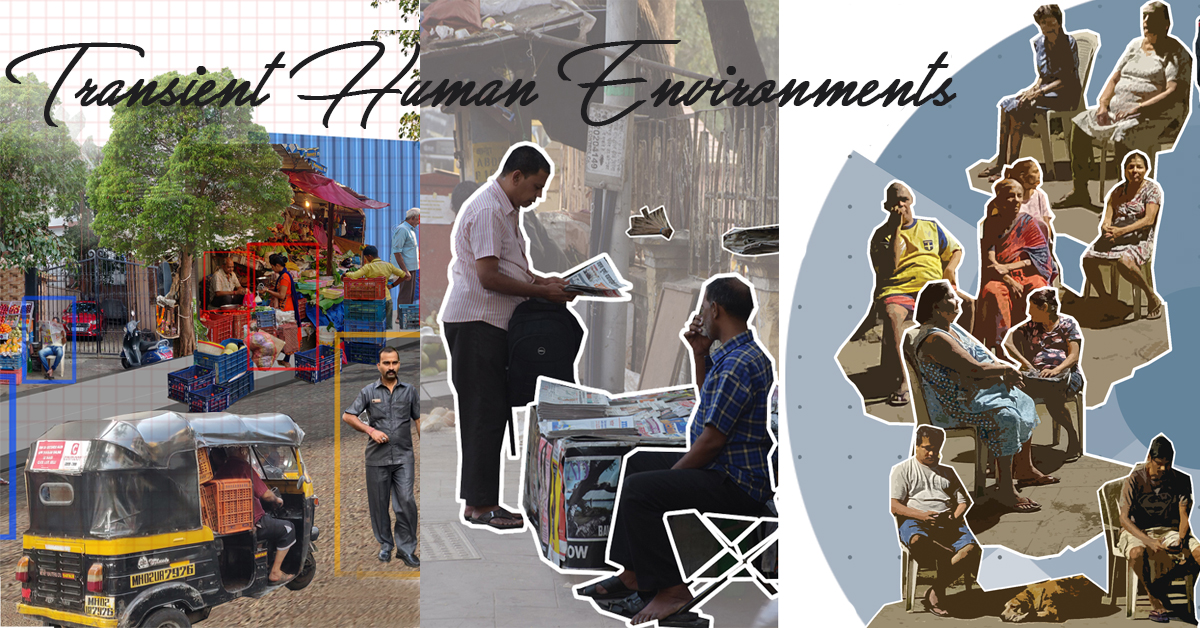Elective Tutor: Chaitra Sharad
‘Moving elements in a city, and in particular, the people and their activities, are as important as the stationary physical parts. We are not simply observers of this spectacle, but are ourselves a part of it, on the stage with the other participants. Most often, our perception of the city is not sustained, but rather partial, fragmentary, mixed with other concerns. Nearly every sense is in operation, and the image is the composite of them all.’
-Kevin Lynch
Act of placemaking is a complex process. The architect is not the only one playing a role. Everyone has a contribution to make including a builder, a city planner, owner, vendor, businessman, citizen. A sense of ownership, a sense of boundary and appropriation are all essential aspects of a place. A change in pace, growth in business, a shift in family dynamics, advanced technology and the relative permanence of architecture, means a place stays while the life moves on.
‘Change doesn’t mean that it is ruined. Change, it means that it has been alive and it has been now made for another kind of expression or experience. I think change is not an abuse. Change is the use of things for something, which is now required, but it is a heightening level of understanding.’
-B V Doshi
When we look at Doshi’s work and his drawings, we always see as much importance give to the surroundings as to the built-form itself. He depicts a camel, sometimes a peacock and even various kinds of trees with as much love as the building he designed placed amidst it. Even when we look at the photographs chosen in his books, he never shies away from portraying the life that surrounds his buildings. A hawker setting up a stall against his Prema Bai Hall or the residents of the Aranya housing drying their freshly laundered clothes along the façade are all present and celebrated.
Very often, we tend to look at a building in vacuum. Although there is a consideration towards context on a larger scale, the immediate adjacencies are seen as a sterile environment; especially in the portrayal through drawings and photographs. It is crucial to understand and respect the idea of actual boundaries and assumed territories. The architect must account for and accept various appropriations that take place due to factors like time and schedules, allied services, care and help providers, growth of the family, changes in lifestyles, periodic maintenance etc. It is essential also to understand architecture as an organism that lives and breathes due to its occupants.
The course looks at the mundane every day in a busy place in a new light through perception and abstraction. The challenge to the students is to see architecture as a backdrop/stage for a range of occurrences. The representations are in the form visual narratives of the temporal occurrences.
Ranvar Village

Map showing 3 squares within the Ranvar Village 
Revi Villa Node 
Agni Square 
Birdsong Cafe Node
The three squares of Ranvar Village and the range of activities were studied and documented in simple collage form. The activities were divided based on three times of the day. The occupants of the three different squares were understood to be culturally and economically varied and observations were made accordingly.
Students: Anagha Pandit, Madhuli Awasarkar, Mayuri Patange, Siddhi Rasam
Pali mala Road

The vegetable market, the associated activities and the appropriations were studied through a division of purpose driven and transitional activities. The individual activities are then looked at in the highlights.
Students: Manali Moghe, Shreya Desai, Shruti Kharbade, Trushad Poladia
Chapel Road


Chapel Road stretch was studied from the point of view of various functional typologies. Earn, serve, transit, learn eat and live were used as guiding categories for making the observations. The outcome was a panoramic picture collage of the stretch at four different time slots.
Students: Gargi Patil, Om Jambotkar, Shardul Patil, Shriya Vartak, Vaishnavi Desai



